Tracking the Wild Condors of Grand Canyon Country
Plus: Elon Musk Shoots Off a Firecracker, Talking with the FBI, Arizona Eats My Tire, and Explorations in Navajo Nation
Greetings,
Tilting West is back after a two-week hiatus. We return with a growing community of subscribers and a renewed focus on interesting people such as CJ Woodward, a field biologist with the Peregrine Fund whose job is keeping tabs on the well-being of rare and endangered wild California condors in the Grand Canyon Country of Arizona.
I encountered CJ last week on the Navajo Bridge on the Colorado River, one leg of a 12-day, 1,675-mile road trip across four states. Trip highlights included talks over a possible documentary film project, explorations in Navajo Nation, and a spectacular light show in the night skies of San Diego.
Elon Musk Lights a Firecracker
It was like a comet with a long glowing tail, easily the most spectacular fireworks show I’ve ever seen. It occurred Monday, March 18, just after sunset, and my campsite in the hills above San Diego gave me a clear view above the lights of the city. Social media instantly blew up with pictures but at the moment it happened nobody I spoke to had any idea what it was.
Only later did we learn that it was a rocket launch by SpaceX, Elon Musk’s company, which took place at Vandenburg Space Force Base in central California. The Falcon 9 booster was carrying nearly two dozen Starlink V2 mini satellites and from all reports it docked successfully with its SpaceX mother ship drone.
This year’s big astronomical event, the total solar eclipse, is set for Monday, April 8, starting at approximately 10:42 a.m. and ending by 2:58 p.m. It is said to be visible across most of North America. If it comes close to matching SpaceX’s show, it should be truly something to see.
Three Guys Talking Forgeries, Crime, FBI
Some years back I wrote a book, Operation Bullpen, which continues to draw the interest of movie and television people. We held talks over the trip about a potential documentary series with producer Scott Tiffany and retired FBI agent Tim Fitzsimmons, who was the case agent for the criminal forgery investigation that is a centerpiece of the book. After a nice lunch at Tim’s home in Arizona he showed us the room in his garage where he stores his FBI and other memorabilia. One fascinating anecdote revealed by Tim: Over his distinguished career he used three FBI-issued handguns, a Smith & Wesson, Sig Sauer, and a Glock, none of which was he allowed to keep after retirement. It is FBI policy to confiscate the weapons used by agents during their service, after which they are destroyed.
The FBI has a similar policy with bulletproof vests. The framed vest in the left of the photo was a relatively new one he used late in his career. The vest he wore through most of his time as an agent, as a SWAT team member and in other action on the job, the one he had broken in and developed a long-standing sentimental affection for—the Bureau took that one and left him with the newbie.
Arizona Eats My Tire
Unexpected things happen on road trips, some of them not so good. North of Phoenix while passing through a highway construction project the right front tire of my truck exploded after I ran over a hole that resembled the gaping jaws of an alligator. After pulling off at a nearby exit I called AAA and my man Tim showed up. He had all the right tools, had changed “more tires than I’d like to count,” as he said, and in twenty minutes got me back up and running.
Navajo Nation
The road from Flagstaff to Page runs through Navajo Nation in Arizona. I’ve been there maybe a half dozen times. It is a fascinating, exhilarating and depressing place with billboards on suicide prevention and the dangers of syphilis along the highway. Navajo Nation, formally defined, reaches into three states: Arizona, Utah, New Mexico. Its 250,000 square miles is larger than ten of America’s 50 states and some 250,000 people, many of whom are doing just fine, live there. That’s the best thing about Navajo Nation for me: the people.
“You don’t need a map,” she said brightly, even though I hadn’t asked her for one. She was a middle-aged Navajo woman with a stylish blond streak in her hair. I never caught her name but her smile won me over instantly.
“There’s only one trail,” she continued on. “You can’t get lost. There’s only one trail,” she repeated even though I wasn’t worried about getting lost on the trail either.
We were at the entrance to Horseshoe Bend. Horseshoe Bend is the top tourist attraction in Page, a tiny red rock desert town close to the Utah border that is home to a man-made wonder—the colossus of Glen Canyon Dam—and assorted astonishing natural wonders. One of them is Horseshoe Bend. The view is free but parking costs $10.
“And don’t forget to take water,” she continued. That line got repeated too: “Don’t forget the water.” I can only imagine how many hundreds of times she repeats these instructions in a single day, and yet her voice had a lift to it like she was saying it for the first time. I asked if I could take her picture and she said, “Sure. Thanks for asking.”
The Big Story
Tracking the Wild Condors
There are two Navajo Bridges, standing side by side with each other. One is the more modern motor vehicle bridge; the other is the older, historic one, built in 1928, and that now serves as a walkway. The newer bridge is the only means of crossing the Colorado by car or truck for 600 miles. The far side of the walking bridge holds the gift shop of the Glen Canyon National Recreation Area, which oversees this area. On the Page side, where most of the tourists enter from, Navajo women in sun hats sell turquoise and silver jewelry, dream catchers, and handmade blankets on tables overflowing with merchandise.
Looking down from the foot bridge you can see the green waters of the Colorado roll by. In the old days, before the dam was built, the river ran as red as the rocks and dirt and sand of this colorful landscape. A short drive away is Lee’s Ferry, the put-in site for float trips down the Grand Canyon. Some days you can see oar-powered rafts passing down the river on the first leg of their thrilling, and thrillingly beautiful, journey.
Above all but the clouds and sky are the soaring red rock walls of Vermillion Cliffs where some of the rarest and most endangered raptors in the world build nests and make their home.
The day I was there I saw a man standing in the center of the bridge causing the people strolling by to do double takes. What is this guy doing? In his mid-to late twenties with an admirably scruffy beard and long-ish hair poking out from his ball cap, he was waving an antennae-like device in semi-circles, head down, while listening absorbedly to the crackling noises emanating from a receiver at his waist. It was so unusual I shot this six-second video snippet of him in action:
His name, I later learned, is CJ Woodward. A field biologist with the Peregrine Fund, he was tuning into—or trying to tune into—a flock of wild California condors that were camped out in the canyon below. But curious passersby kept peppering him with questions, asking him to point out where the famous black birds were.
“They’re in the rocks,” he said, more than once. “I know that isn’t a very good description. There are a lot of rocks down there. But that’s where they are. Down by the rocks.”
CJ was clearly annoyed. Not just because of all the tourists interrupting his work, but also by what his subjects were doing. California condors are majestic birds of flight. They are North America’s largest bird, their adult wing span ranging up to ten feet. They clock up to 75 miles per hour in flight and sometimes travel 100 miles in a day searching for food and scraps. They are the sanitation engineers of the avian world, cleaning up the remains of dead animals. Back in the Pleistocene Ice Age when there were great flocks of them living free as the wind they scavenged on the dried carcasses of fallen mastodons rotting in the sun.
Today, however, with no mastodons available for scrounging, they had settled on a lunchtime feast of debris that had blown down into the river canyon from a construction site in nearby Marble Canyon. “Now I’ve got to figure out what they’re eating, which ones are eating what they shouldn’t be, and keep an eye on them,” CJ said disgustedly.
Usually the condors hang out in the structural underside of the motor bridge, more easily seen by field biologists and tourists alike. The bridges are about 500 feet above the water, and the trash party was occurring down the river a ways from us. I looked and looked and could not see them until finally one flapped its wing and the movement gave away the group’s position. Still, after a long while of looking and not seeing much I wandered back to my truck to have a sandwich.
That’s when I got lucky. CJ came walking past a few minutes later with his spotting scope. “I got my scope now,” he said to me. “You want to see a better view of them?” You bet! Leaving my half-eaten cheese and turkey sandwich on the seat I hustled over to an observation point adjacent to the bridge where he had set up his scope on a tripod.
“I was a little grumpy before,” he said apologetically, explaining that the day before he and his girlfriend, also a member of the Peregrine Fund’s Arizona condor unit, had hiked over 20 miles to recover a dead bird. Condors in the wild face many threats to their survival, the chief cause of death being lead poisoning. CJ and the rest of the team spend so much time fixated on their well-being that when one of them goes down they take it personally. It’s like they have lost a close companion which, in a way, they have.
I asked him how they had found it. “GPS,” he said. “Tomorrow I’ll go on Google Maps and I’ll see this flock.” All the birds are tagged and wear a radio transmitter on their wings as well.
CJ stepped away from the scope to let me take a look. It was a fabulous sight. I could see them clearly now. Each bird was tagged with a number and letter on its wing. I could even see the trash they were so happily chomping on. The field biologist extended his kindness by putting my phone against the eyepiece of the scope and taking a picture of what we were seeing through it:
In the 1980s it was discovered that only 22 California condors remained in existence. This precipitated a kind of emergency wildlife rescue—an extraordinary captive breeding program in California and Arizona in which the chicks are raised in captivity and released when they are able to fend for themselves in the wild. Now there are some 500 of them—200 or so in captivity and the rest flying free the way birds are meant to be.
The Peregrine Fund is a nonprofit organization whose mission is to save and protect endangered raptors such as the California condor, Andean condor, and American kestrel. To support the efforts of CJ and so many others, please consider a donation.





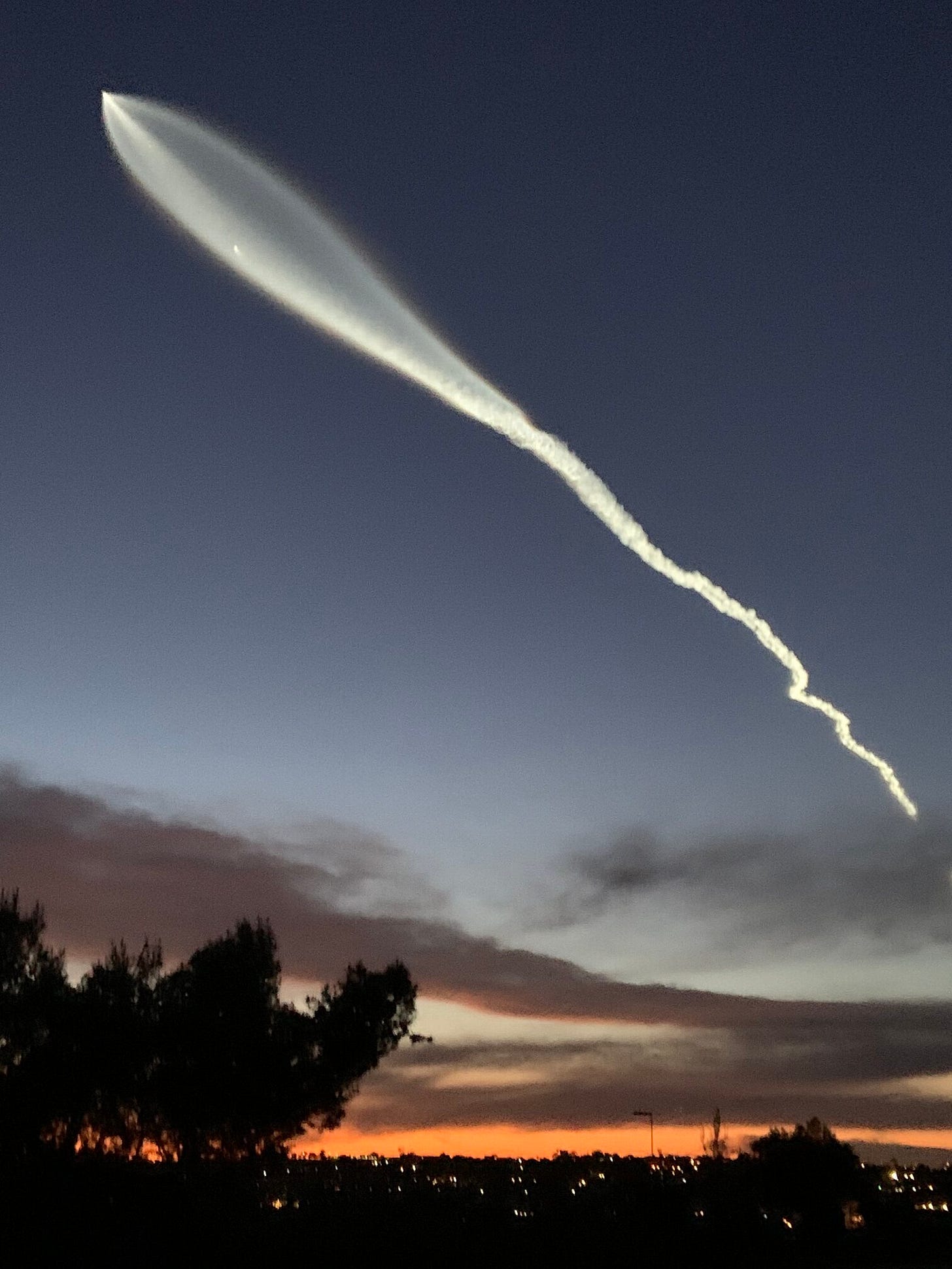
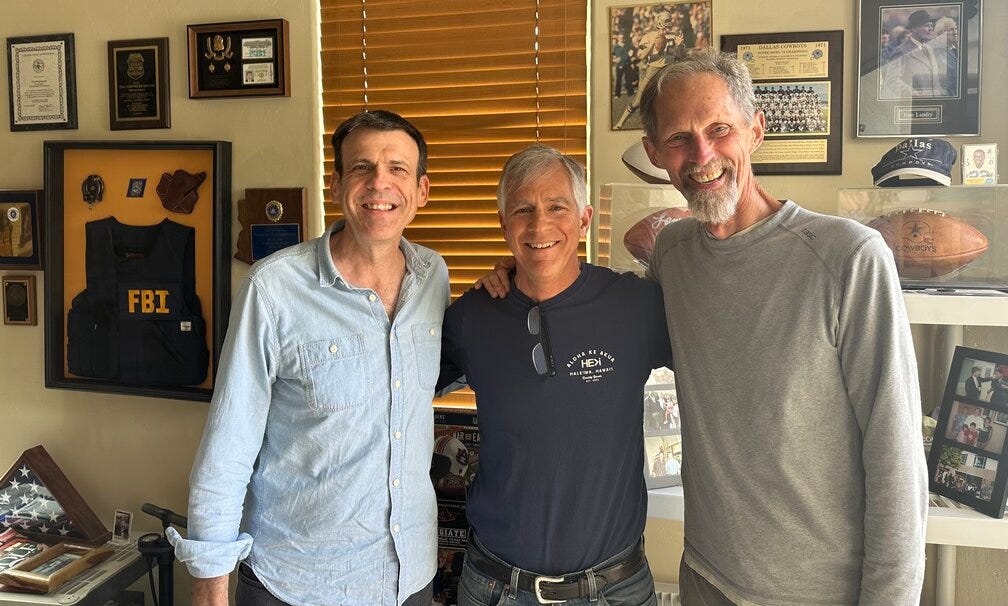
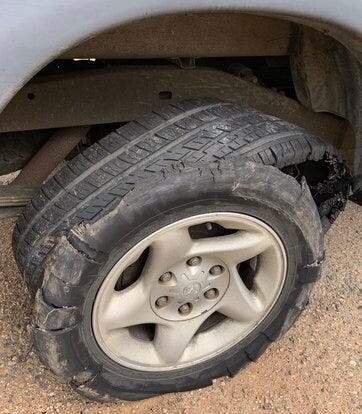
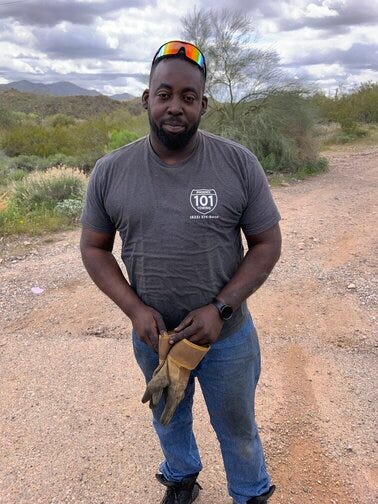

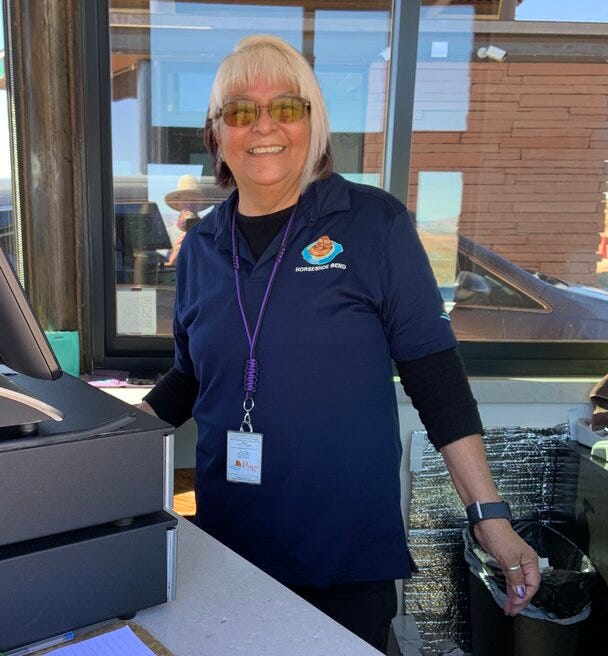
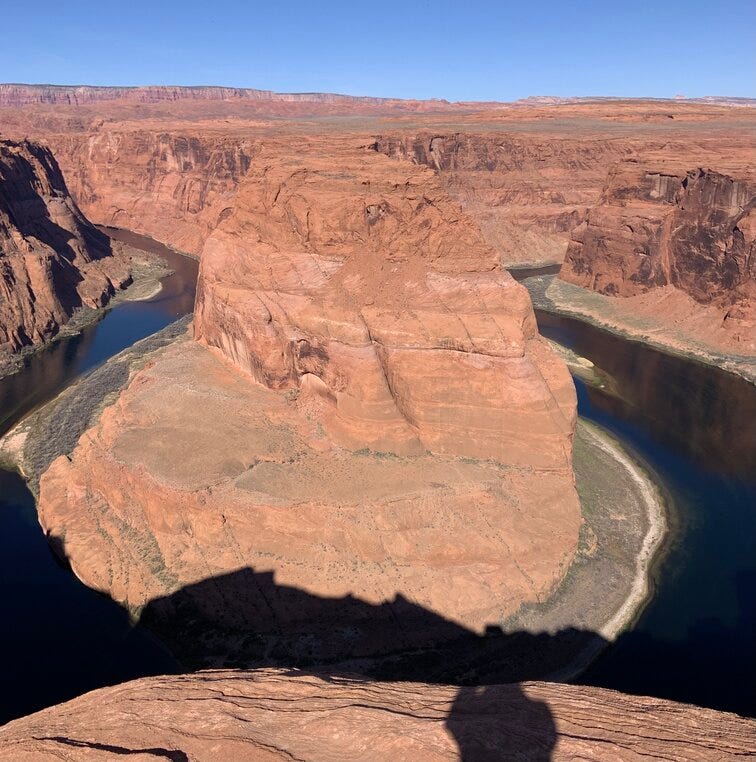
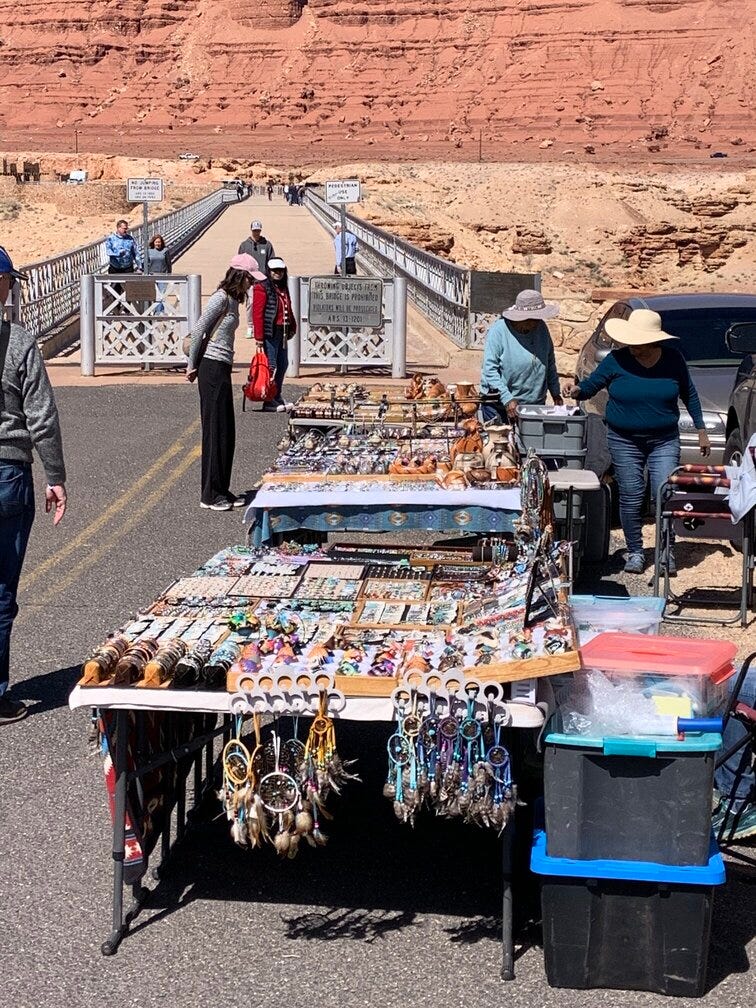
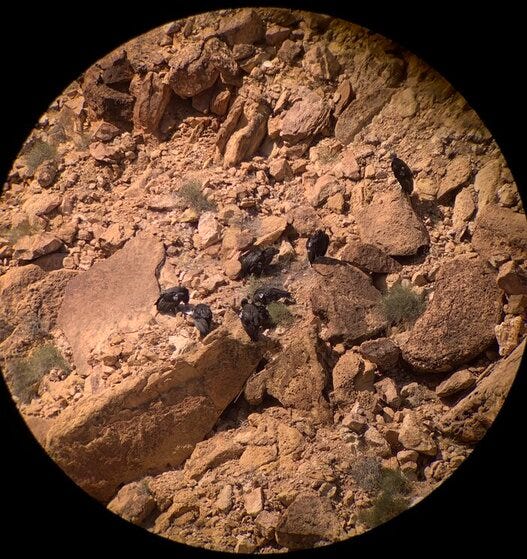
Sounds like a great road trip.
That it was. Hey, nice picture of you on your Substack. I can't find anything I like of me, so I'm using a a self-portrait of Edouard Manet as a stand-in.